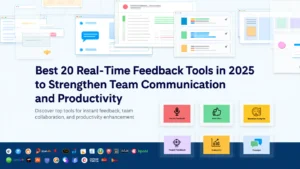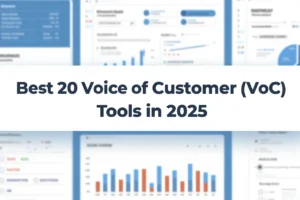Product sampling is a marketing technique where companies offer free samples of their products to potential customers. This approach allows consumers to try products before committing to a purchase. In this blog, we will explore what product sampling is, why it’s important, and how to create an effective sampling strategy for your business.
What is Product Sampling?
Product sampling involves distributing free samples of a product to potential customers. The goal is to let people experience the product firsthand, which can lead to increased awareness, trial, and ultimately, sales. Sampling can be done in various ways, such as in-store, at events, or through direct mail.
Why is Product Sampling Important?
Product sampling is a valuable marketing tool for several compelling reasons:
Builds Trust and Credibility
- Direct Experience: Allowing potential customers to try a product firsthand builds trust. When consumers experience the product’s quality and benefits directly, it enhances their confidence in your brand.
- Positive Impressions: A well-executed sampling experience can create a positive impression of your brand, making customers more likely to view it favorably.
Generates Interest and Awareness
- Product Visibility: Sampling helps increase awareness by putting your product directly in front of potential customers. It’s an effective way to generate buzz and attract attention to your brand.
- Initial Engagement: Free samples can stimulate interest and curiosity, encouraging consumers to learn more about your product and brand.
Encourages Trial and Adoption
- Reducing Risk: By offering a no-cost trial, you reduce the perceived risk for consumers who may be hesitant to purchase a new product without trying it first.
- Increases Conversions: Customers who have sampled a product and liked it are more likely to make a purchase, leading to higher conversion rates.
Provides Valuable Feedback
- Customer Insights: Sampling campaigns can yield direct feedback from consumers about the product’s taste, usability, or effectiveness. This feedback can be invaluable for product improvement and development.
- Market Fit: Understanding how your product performs in the real world helps gauge its fit in the market and identify any adjustments needed.
Boosts Brand Loyalty
- Customer Satisfaction: Offering free samples can create a sense of goodwill and increase customer satisfaction. Happy customers are more likely to become loyal supporters of your brand.
- Long-Term Relationships: Positive sampling experiences can lead to long-term relationships, where customers continue to purchase and recommend your products.
Cost-Effective Marketing
- Affordable Promotion: Compared to other forms of advertising, product sampling can be a cost-effective way to reach a wide audience and promote your product.
- High Return on Investment (ROI): The direct engagement with potential customers and the resulting increase in sales often provide a high return on investment for sampling campaigns.
Differentiates Your Brand
- Stand Out: Product sampling helps your brand stand out from competitors who may not be offering similar opportunities. It gives you a unique edge in a crowded market.
- Competitive Advantage: Being proactive with sampling can set your brand apart, showcasing your product’s strengths and making it memorable to consumers.
Enhances Customer Experience
- Personal Connection: A positive sampling experience can create a personal connection between the consumer and your brand. This connection can influence their purchasing decisions and brand loyalty.
- Interactive Marketing: Sampling provides an interactive marketing experience, where consumers actively engage with your product rather than passively receiving information.
In summary, product sampling is important because it builds trust, generates interest, encourages trial, provides feedback, boosts loyalty, is cost-effective, differentiates your brand, and enhances customer experience. It’s a powerful strategy that can significantly impact your brand’s success and growth. For more guidance on implementing a successful sampling strategy, you can take help of a brand sampling agency.
What is Product Sampling Distribution?
Product sampling distribution refers to the methods and channels used to distribute samples to potential customers. It includes choosing the right locations, timing, and target audience to maximize the effectiveness of the sampling campaign. Distribution strategies can include:
- In-Store Sampling: Offering samples directly in retail locations.
- Event Sampling: Distributing samples at trade shows, festivals, or other public events.
- Direct Mail: Sending samples to customers’ homes through mail.
- Online Sampling: Providing samples through online promotions or partnerships.
Benefits of Product Sampling
Product sampling offers several benefits, including:
- Increased Brand Exposure: Reaches a larger audience and enhances brand visibility.
- Customer Engagement: Engages potential customers and encourages interaction with your brand.
- Improved Conversion Rates: Converts sample recipients into paying customers.
- Cost-Effective Marketing: Often more affordable than other advertising methods.
- Competitive Advantage: Differentiates your brand from competitors by offering a tangible experience.
How to Create a Product Sampling Strategy?
Creating an effective product sampling strategy involves several key steps. Here’s a detailed guide to help you develop a successful strategy:
Define Your Objectives
Start by clearly defining what you want to achieve with your product sampling campaign. Your objectives will guide the entire strategy and help measure its success. Common objectives include:
- Increasing Brand Awareness: Making more people aware of your product.
- Driving Sales: Encouraging sampled consumers to make a purchase.
- Gathering Feedback: Collecting consumer opinions on your product to inform future improvements.
- Generating Leads: Building a database of interested potential customers.
Identify Your Target Audience
Understanding your target audience is crucial for an effective sampling strategy. Consider:
- Demographics: Age, gender, income, and other relevant factors.
- Psychographics: Interests, lifestyles, and purchasing behaviors.
- Geographics: Locations where your target audience lives or work.
By identifying your target audience, you can tailor your sampling campaign to reach the right people.
Choose the Right Sampling Method
Select the most suitable method for distributing your samples based on your objectives and target audience. Common methods include:
- In-Store Sampling: Offering samples at retail locations where customers can try your product while shopping.
- Event Sampling: Distributing samples at events such as trade shows, festivals, or community gatherings.
- Direct Mail: Sending samples to customers’ homes, often accompanied by promotional materials.
- Online Sampling: Providing samples through online promotions, partnerships, or social media campaigns.
Design the Sampling Experience
Ensure that the sampling process is engaging and memorable for consumers. Consider the following:
- Packaging: Use attractive and functional packaging that represents your brand well.
- Presentation: Ensure samples are presented in a way that highlights the product’s key features and benefits.
- Instructions: Provide clear instructions on how to use the product and any additional information about your brand.
Plan Distribution and Logistics
Effective distribution and logistics are essential for a successful sampling campaign. Plan the following:
- Quantity: Determine how many samples you need and ensure you have enough inventory.
- Timing: Choose the right timing for distributing samples to maximize impact (e.g., during peak shopping periods or relevant events).
- Location: Select locations or channels that will effectively reach your target audience.
- Tracking: Implement a system to track sample distribution and collect data on where and to whom samples were given.
Develop a Promotion Plan
Promote your sampling campaign to ensure maximum reach and engagement. Strategies include:
- Advertising: Use online and offline advertising to announce your sampling campaign.
- Social Media: Leverage social media platforms to create buzz and encourage participation.
- Partnerships: Collaborate with influencers, bloggers, or other brands to expand your reach.
- Email Marketing: Send targeted emails to your existing customer base or leads.
Monitor and Evaluate
Track the performance of your product sampling campaign to assess its effectiveness. Key metrics to monitor include:
- Sampling Reach: Number of samples distributed and the reach of your campaign.
- Consumer Response: Feedback from recipients and their reactions to the product.
- Conversion Rates: Percentage of sampled consumers who make a purchase or engage with your brand further.
- ROI: Calculate the return on investment by comparing the costs of the sampling campaign with the generated sales or leads.
Gather and Analyze Feedback
Collect feedback from consumers who received samples. Use surveys, interviews, or online reviews to gather insights. Analyzing this feedback can help you:
- Identify Strengths and Weaknesses: Understand what consumers liked or disliked about the product.
- Improve the Product: Make necessary adjustments based on consumer input.
- Refine Future Campaigns: Use insights to enhance future sampling strategies and campaigns.
Adjust and Optimize
Based on the feedback and performance data, make adjustments to your sampling strategy to improve its effectiveness. This might involve:
- Tweaking Distribution Methods: Adjusting where and how samples are distributed based on what works best.
- Modifying Sampling Techniques: Changing how samples are presented or packaged.
- Revising Promotion Plans: Enhancing promotional efforts to better reach your target audience.
By following these steps, you can create a comprehensive and effective product sampling strategy that meets your objectives and maximizes the benefits for your brand. For additional support and guidance, our team at Pearl Lemon Experiences is here to help you design and execute a successful product sampling campaign.
Product Sampling Examples
Here are some examples of successful product sampling campaigns:
- Food and Beverage Samples: Brands like Coca-Cola and Starbucks often offer free samples of their new beverages in stores or at events.
- Cosmetics Samples: Beauty brands like Sephora distribute free samples of skincare and makeup products to customers at their stores.
- Health Products: Companies like GNC provide free samples of vitamins and supplements at health and fitness expos.
How to Find Good Product Sampling Ideas?
To find effective product sampling ideas:
- Research Your Market: Understand your target audience’s preferences and behaviors.
- Analyze Competitors: Look at how your competitors are using sampling and identify what works for them.
- Use Customer Feedback: Gather input from current customers about their sampling preferences.
- Experiment with Different Formats: Try various sampling methods and locations to see what yields the best results.
- Leverage Social Media: Use social media platforms to engage with your audience and promote your sampling campaign.
Conclusion
Product sampling is a powerful marketing tool that helps introduce potential customers to your products, build brand trust, and boost sales. By developing a well-thought-out sampling strategy, you can effectively reach your target audience and achieve your marketing goals. For more assistance with your product sampling efforts, our team at Pearl Lemon Experiences is here to help. Reach out to us to learn how we can support your marketing initiatives.
FAQs
To measure effectiveness, track metrics such as the number of samples distributed, consumer feedback, conversion rates (purchases or sign-ups), and overall return on investment (ROI). Surveys and tracking codes can help assess how many recipients engaged with your brand or made a purchase.
Select a product that best represents your brand and has broad appeal to your target audience. It should be easy to sample and showcase key features or benefits. Consider offering a new or flagship product that highlights your brand’s strengths.
Yes, product sampling can be effective for online businesses through methods such as mail samples, online promotions, or partnering with influencers. Offering samples through these channels can help reach potential customers who might not visit physical stores.
Follow up by sending thank-you emails, surveys to gather feedback, or promotional offers to encourage a purchase. This follow-up helps build relationships and can provide valuable insights into the effectiveness of your sampling campaign.
Yes, product sampling is an excellent way to test new products or variations before a full market launch. Gather feedback from sampled consumers to understand their preferences and make necessary adjustments before scaling up.





